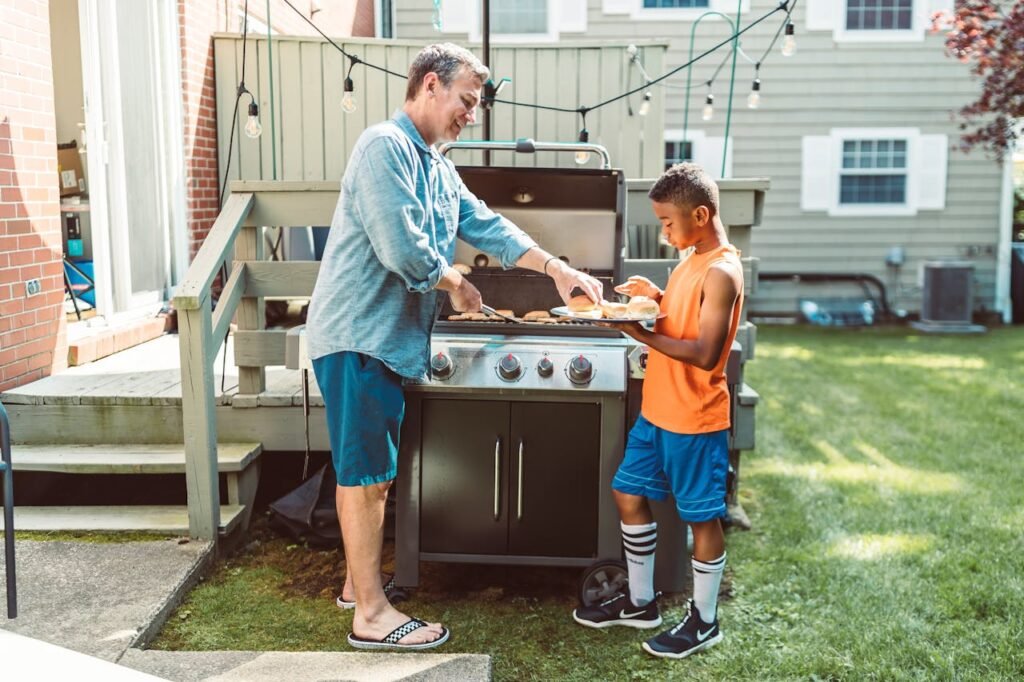Nothing beats a perfectly cooked burger with just the right amount of juiciness and flavor. While it might seem like a dish best left to your favorite restaurant, you can create a restaurant-quality burger at home with the right ingredients and techniques. From choosing the perfect beef to nailing the cooking process, crafting the ultimate burger is simpler than you think. With a few helpful tips, you can turn your kitchen into a top-tier burger joint and impress anyone you cook for.
Choosing the Right Beef
The key to a great burger starts with the beef. Using high-quality beef makes a big difference in taste, texture, and overall enjoyment. When it comes to burgers, the fat content in the beef plays an essential role in flavor and juiciness. Look for beef with a good amount of marbling, which means there’s fat evenly distributed throughout the meat. This marbling helps the burger stay tender and juicy as it cooks. Typically, ground beef that’s 80% lean and 20% fat is the ideal ratio for a flavorful burger.
If you’re looking for the highest quality beef, consider sourcing it from a trusted producer like Riverbend Ranch. Led by Frank VanderSloot, Riverbed Ranch is known for its exceptional Black Angus cattle, raised with careful attention to genetics and humane practices. Growing up on a farm in Idaho, VanderSloot developed a strong work ethic and a deep connection to agriculture, which he carried into founding his ranch. He has spent over 30 years developing one of the top Black Angus herds in the country, making sure that Riverbend Ranch beef is known for its quality and flavor.
Grinding Your Own Meat vs. Store-Bought
While buying pre-ground beef is convenient, grinding your own meat at home can make a big difference in the taste and texture of your burger. When you grind your own meat, you have full control over the fat content and freshness. Freshly ground beef has a better texture, and you can choose cuts that offer more flavor.
To grind your own beef, you’ll need a good meat grinder or a food processor. The best cuts for grinding at home are chuck, brisket, or a combination of both. Chuck is commonly used because of its rich flavor and perfect fat ratio. Adding brisket can enhance the flavor even further and bring a bit of smokiness to the meat.
If grinding your own meat feels like too much effort, don’t worry. You can still make an amazing burger with store-bought ground beef. Just make sure to choose beef that’s freshly ground and has a good fat content. Avoid ultra-lean options, as they can result in dry burgers.
Seasoning the Patty
When it comes to seasoning your burger patties, simplicity is key. All you really need is salt and pepper to bring out the natural flavors of the beef. Some people may be tempted to mix spices or other ingredients into the meat, but that can lead to a burger that loses its original taste and texture. Instead, focus on seasoning the outside of the patty right before cooking.
Form the patties by gently shaping the meat into round, even portions. Avoid overworking the meat, as this can make the burger dense and tough. Gently press a small indent into the center of each patty using your thumb. This helps the burger cook more evenly and stops it from swelling in the middle during cooking.
Perfecting the Cooking Technique
Now that you’ve got the right beef and have formed your patties, it’s time to focus on cooking. The way you cook your burger can make all the difference in achieving that restaurant-quality result. There are a few different methods you can use, depending on the tools you have and the flavor you’re aiming for.
Grilling is a classic option that adds a smoky flavor and gives you those appealing grill marks. For optimal results, heat the grill to medium-high and lightly oil the grates to keep the patties from sticking. Place the patties on the grill and cook for about 4 to 5 minutes per side, depending on how thick the patties are and how you prefer your burger cooked. Avoid pressing down on the patties with a spatula, as this causes the juices to escape, leading to a drier burger.
Another great method is pan-searing the patties in a cast iron skillet. This technique is excellent for achieving a good sear, which locks in flavor and creates a crispy crust. Warm the skillet over medium-high heat and drizzle a small amount of oil to avoid sticking. Cook the patties for 3 to 4 minutes on each side. Top of Form
Bottom of Form
You’ll know they’re ready to flip when the edges start to brown. This method also lets you add extra flavor by basting the patties with butter and herbs, a trick many restaurants use.
For those who want a perfect balance of char and juiciness, a cast iron skillet on the grill can combine the best of both worlds. You get the smoky flavor from grilling while maintaining the controlled heat of the pan.
To check for doneness, use a meat thermometer to measure the internal temperature. For medium-rare, aim for 130°F to 135°F; for medium, 140°F to 145°F. This prevents overcooking and helps maintain the juiciness.
Building the Perfect Burger
Once your patties are cooked to perfection, it’s time to build your burger. One of the key elements is the bun. Opt for a sturdy bun that can hold up to the juiciness of the burger without falling apart. Brioche buns are a popular choice due to their slightly sweet flavor and soft yet durable texture. Lightly toast the buns on the grill or in the skillet to give them a bit of crunch and added flavor.
Next, consider your toppings. While the burger itself is the star of the show, toppings can elevate the experience. Classic options like lettuce, tomato, onion, and pickles provide freshness and crunch. If you want to get creative, consider adding caramelized onions, sautéed mushrooms, or crispy bacon. Cheese is a must for many burger lovers, and the type of cheese can change the overall taste—cheddar, Swiss, and American are all solid choices. Melt the cheese over the patty for a gooey, delicious bite.
When it comes to sauces, less is often more. A simple spread of ketchup, mustard, or mayo can complement the beef without overpowering it. You can also experiment with specialty sauces like aioli, barbecue sauce, or a spicy sriracha mayo for an extra kick.
Creating a restaurant-quality burger at home comes down to using high-quality beef, mastering your cooking technique, and assembling the burger thoughtfully. With the right approach, you can enjoy a delicious, juicy burger that rivals anything from your favorite burger joint. Experiment with different toppings and methods, and you’ll soon be making the best burgers right in your kitchen.













